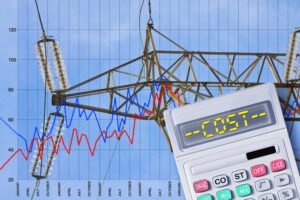The Comprehensive Guide to Understanding the Unit Cost of Electricity: Exploring Factors, Calculations, and Implications
Delve into the intricacies of electricity unit cost with our comprehensive guide, which offers a detailed exploration of the factors, calculations, and implications involved. From understanding the components that contribute to the unit cost to unraveling the economic and environmental implications, this article provides valuable insights for a broad readership, delivering high-quality information and practical guidance on this essential topic.
What is the unit cost of electricity?
The unit cost of electricity refers to the price of one unit of electricity, typically measured in kilowatt-hours (kWh). It is a critical metric that impacts both consumers and businesses, influencing their energy expenditures and overall operational costs. Understanding the unit cost of electricity is essential for making informed decisions regarding energy consumption, budgeting, and sustainability initiatives.
For residential customers, the unit cost of electricity directly affects monthly utility bills, especially during peak energy usage periods such as hot summers or cold winters when air conditioners, heat pumps, and heaters are in heavy use. Businesses rely on electricity for various operations, and the unit cost plays a significant role in determining their production costs and market competitiveness.
The key components that contribute to the unit cost of electricity include the cost of generating electricity, the demand and supply of the commodity, and other regulatory or government regulatory fees. These components collectively determine the final price that consumers and businesses pay for each unit of electricity consumed.
Factors Affecting the Unit Cost of Electricity
As mentioned, several factors influence the unit cost of electricity, ranging from supply and demand dynamics to the impact of fuel prices and government policies and regulations.
Supply and demand dynamics play a crucial role in determining electricity rates. During periods of high demand, such as extreme weather conditions, the cost of electricity tends to increase due to the need for additional generation capacity to meet the heightened consumption.
The prices of natural gas, coal, and other fuels used in electricity generation also significantly impact the unit cost of electricity. Fluctuations in fuel prices can directly affect the overall cost of producing electricity, subsequently influencing the unit cost for consumers and businesses.
Government policies and regulations, such as carbon pricing mechanisms and renewable energy incentives, can also affect the unit cost of electricity. While these policies aim to promote sustainability, reduce emissions, and diversify the energy mix, they may also impose cost implications on consumers and businesses.
How to Find the Unit Cost of Electricity on Your Bill
In Alberta, retailers are required to include the unit cost of electricity on every bill. However, this information is often buried among various details, making it difficult for many homeowners to locate.
To find the unit cost of electricity on your bill, follow these steps:
- Sections of the Bill: Every bill is divided into sections, including Energy Charges, Delivery, Transmission, Government, and Other Charges.
- Locate the Total Consumption: Look for a line that states the total amount of electricity consumed, for example, 1028.75 kWh.
- Identify the Unit Cost: Next to the total consumption, you will find the unit cost of electricity, for example, $0.0599/kWh (which is the same as 5.99 cents per kWh).
- Calculate Total Consumption Cost: Multiply the total energy consumed by the unit cost to find the total consumption cost for the billing period. For example, 1028.75 kWh multiplied by 0.0599/kWh.
By following these steps, you can easily determine the unit cost of electricity and your total consumption cost from your bill.
In this example, your unit cost of electricity is $0.059925 per kWh, which is equivalent to 5.99 cents per kWh. This means you pay 5.99 cents for every kilowatt-hour of electricity you use. Please note that this cost does not include additional charges such as administrative Charges, Transmission Charges, Delivery Costs, Government Taxes, etc., which are applied regardless of the retailer or whether electricity is consumed.
To make comparisons easier, Muvar has created a cost calculator. This tool helps homeowners compare their unit cost of electricity with the current average market rate. It also provides estimates of the total consumption cost based on factors such as house type, number of rooms, and other variables, letting users know if there are potential cost savings
Read more on: Alberta Energy Bills: Hidden Costs You Might Be Missing
The implications of the unit cost of electricity are significant.
For consumers and businesses, the unit cost of electricity has significant economic and environmental implications. From an economic perspective, high electricity costs can have an impact on household affordability and business operational expenses. This can potentially affect consumer purchasing power and business profitability.
On the environmental front, sustainability efforts and carbon emissions are closely linked to the unit cost of electricity. Higher reliance on low-carbon or renewable energy sources may lead to increased electricity costs initially, but it contributes to long-term environmental sustainability and mitigates the impact of climate change.
To manage and reduce electricity costs, consumers and businesses can implement various strategies, including energy efficiency measures, demand-side management, investment in renewable energy technologies, and participation in demand response programs. These initiatives not only help in cost reduction but also contribute to environmental conservation and sustainability.
Conclusion
Understanding the unit cost of electricity is paramount for consumers and businesses alike. It directly influences energy expenses, operational costs, and sustainability efforts. By comprehending the factors, calculations, and implications associated with the unit cost of electricity, individuals and organizations can make informed decisions to manage costs effectively and contribute to a more sustainable energy future.
In conclusion, staying informed about the unit cost of electricity and adopting energy-efficient practices are crucial steps towards achieving cost savings and environmental stewardship. It is imperative for consumers and businesses to stay abreast of developments in the energy sector and proactively engage in initiatives that promote energy efficiency and sustainability.





